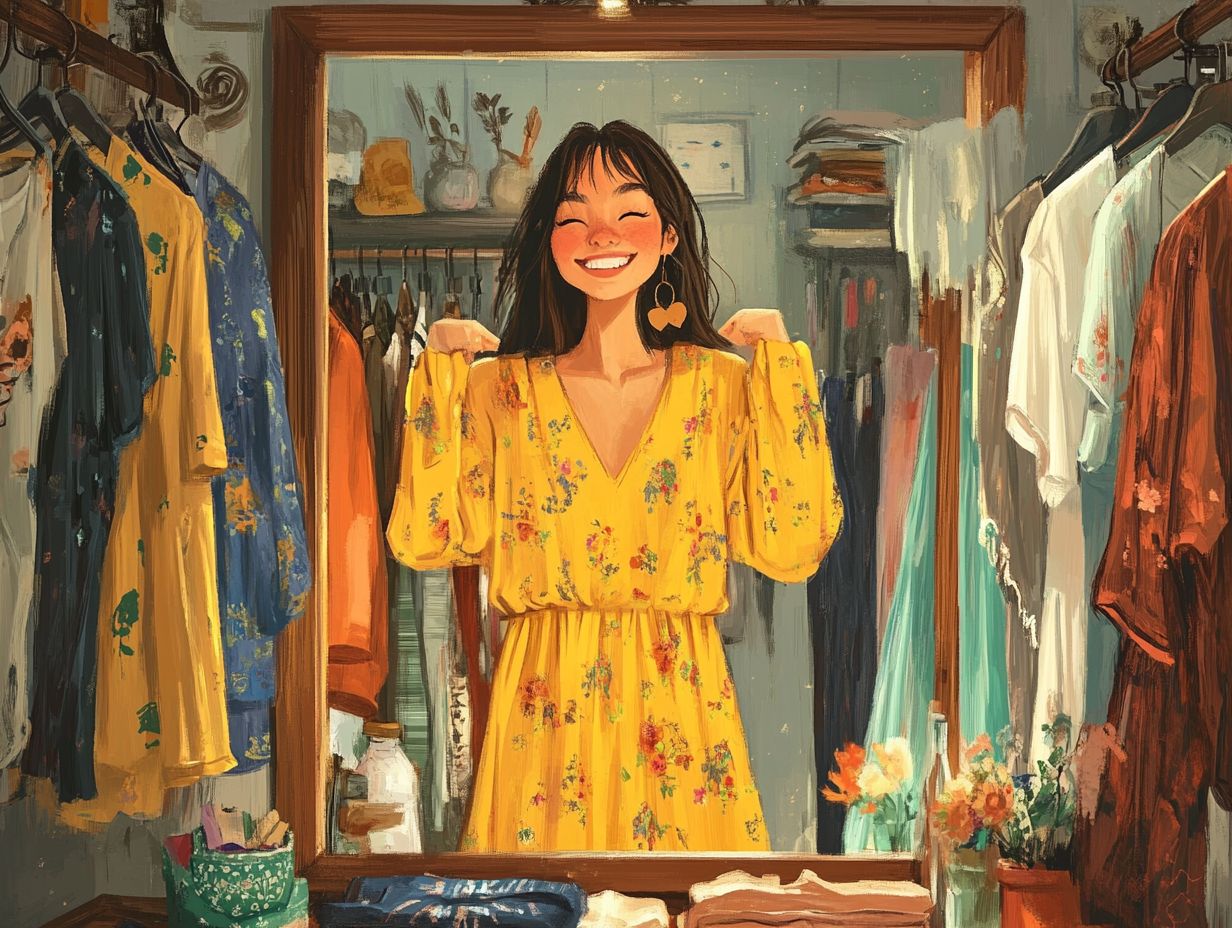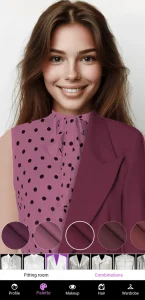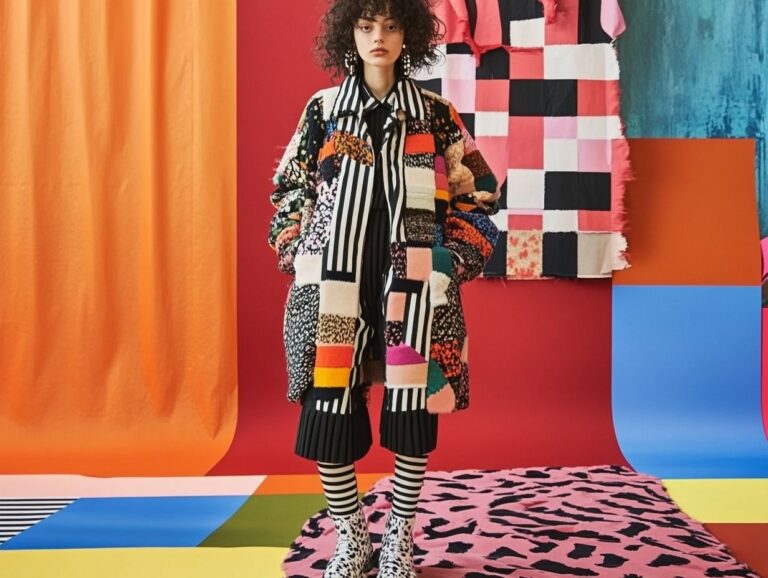Finding clothes that flatter your unique body shape may seem daunting, but it doesn’t have to be. Understanding your body shape, recognizing your best features, and knowing how to dress to highlight them are essential elements of the process. By selecting must-have wardrobe pieces and following advice on tailoring for the best fit, you can create a functional wardrobe that suits every occasion. This approach will help you avoid common fashion mistakes and discover a personal style that truly reflects who you are, whether through a closet cleanout or consulting a fashion stylist.
Understanding Your Body Shape

Understanding your body shape is a fundamental aspect of developing your personal style. By knowing your body shape, you can select outfits that complement your silhouette, enabling you to choose structured pieces and tailored fits that enhance your appearance. Consider using a mood board or Pinterest boards to gather style inspiration that aligns with your body image.
This knowledge enables you to embrace your body image, build your confidence, and curate a wardrobe that truly reflects your unique style, whether by seeking advice from a stylist or exploring inspiration on Pinterest boards.
Identifying Your Body Shape
Identifying your body shape is crucial because it enables you to make informed choices about outfits that best suit your personal style. Understanding your body shape—whether it is pear, apple, hourglass, or rectangle—helps you recognize how different styles will fit and drape on your figure. This evaluative process can simplify your wardrobe assessment and guide your outfit choices.
To determine your body shape accurately, start by measuring your bust, waist, and hips. This will provide you with a clearer understanding of your proportions. It is advisable to stand in front of a full-length mirror while taking these measurements, as this can help you better assess your body’s features.
Certain styles, such as A-line dresses for pear shapes or wrap tops for apple body types, naturally complement your curves and proportions, making the outfit selection process easier.
Additionally, utilizing fit tools like dress fit guides or virtual try-on apps can assist you in discovering styles that work best for you. Explore shopping hacks and outfit inspiration from New York’s street style or celebrities like Gigi Hadid to find looks that resonate with your wardrobe aspirations.
Dressing for Your Body Shape
Dressing for your body shape involves selecting clothing that accentuates your best features while maintaining an overall balance in your wardrobe.
Understanding which structured pieces suit your body shape can significantly impact your outfit choices, leading to a wider variety of options and increased confidence in your everyday attire.
Tips for Accentuating Your Best Features

To develop a personal style that boosts your confidence and reflects your unique self, it’s important to accentuate your best features. Whether you want to highlight graceful shoulders or showcase curvier hips, knowing how to make clothing choices that enhance the positive aspects of your silhouette is essential for everyone. Utilize jewelry selection to add a statement piece that highlights your features elegantly.
Consider opting for alterations. If you have a rectangular or athletic build, a cinched waist can create the illusion of an hourglass figure. For those with broader shoulders, an A-line fit can flare out and create a softer appearance if that aligns with your preferences.
Be mindful of your accessories as well. Statement necklaces can draw attention to a graceful neckline, a structured belt can accentuate a defined waist, and earrings can highlight beautiful cheekbones and a well-defined jawline.
Choose colors thoughtfully, too. Lighter colors attract the eye, while darker shades recede and create a slimming effect. To accentuate your features, consider wearing your favorite colors close to your skin, using neutrals around them to enhance their impact.
By experimenting with these elements, anyone can discover their ideal balance in personal style. Whether you’re incorporating leggings for comfort or choosing a bold statement piece for style, finding the right wardrobe mix is key.
Common Mistakes to Avoid
Common fashion mistakes can significantly hinder one’s ability to dress effectively for their body shape and develop a personal style. One frequent error is misjudging fit when selecting clothes intended to flatter the body. This can result in garments that are either too tight or too loose, leading to discomfort and an unflattering appearance. Such issues can often cause feelings of self-consciousness instead of self-confidence. To avoid these pitfalls, consider a shopping strategy that emphasizes outfit balance and addresses wardrobe gaps.
Every body shape typically has specific styles that complement its natural curves or lack thereof. Impulsive purchases are another common mistake that affects individuals of all shapes and sizes. These hasty decisions can lead to wardrobe regrets, resulting in clothes that remain unworn or, worse yet, a closet filled with trendy items that ultimately do not suit one’s body shape or lifestyle.
To mitigate these risks, outfit planning is essential. This involves considering how often particular pieces will be worn, assessing the versatility of items, and incorporating classic silhouettes. By taking body shape into account during the selection process, individuals can make smarter wardrobe decisions that reflect their unique style while avoiding the typical pitfalls of dressing for their body type.
Choosing the Right Fit
The importance of fit in clothing lies in its ability to bridge the gap in your wardrobe by ensuring that you select pieces that align with your personal style and body shape. Addressing wardrobe gaps through a shopping strategy can enhance your confidence boost and overall style evolution.
How to Determine Proper Fit

Fit is one of the most crucial elements in developing a personal style that is both flattering and comfortable. This skill involves the ability to observe and assess how different types of clothing—whether structured pieces like blazers and tailored pants or loose items like oversized sweaters and joggers—fit on the body.
Additionally, it is important to understand how various types of fabric influence fit; for example, a structured cotton blend will create a different silhouette compared to a soft jersey, as the two fabrics drape in distinct ways.
By paying attention to these details, individuals can make better decisions that enhance their overall appearance and boost their confidence. This evaluative process can alleviate shopping anxiety and ensure that your closet organization supports your style evolution.
Building a Versatile Wardrobe
The most important aspect of a versatile wardrobe is having a wide variety of outfits. A truly versatile wardrobe includes essential pieces that can be mixed and matched to create suitable ensembles for various occasions. Addressing closet chaos through thoughtful clothing evaluation and incorporating a shopping strategy can help maintain a balanced and stylish wardrobe.
Essential Pieces for Every Body Shape
The essential wardrobe pieces may vary depending on body shape, but they are crucial for creating a functional and stylish look. Consider building a capsule wardrobe, focusing on essential pieces that offer outfit coordination for every season.
Knowing how to choose the right essentials can help individuals highlight their best features and boost their confidence. For instance, someone with a pear-shaped body might benefit from A-line skirts and structured tops to achieve balance, while those with an hourglass figure can opt for fitted clothing to accentuate their waist.
Personal style can also be enhanced through layering with the right essentials; a light cardigan over a fitted dress or a tailored blazer over a flared top can add dimension to an outfit.
Additionally, accessories like statement belts or long necklaces can draw attention to specific areas and elevate any ensemble, ensuring that individual style is beautifully expressed.
Mixing and Matching for Different Occasions

Mixing and matching your wardrobe pieces for various occasions helps maintain outfit variety while showcasing your personal style. This technique ensures that you utilize your clothing items to their fullest potential, allowing for greater creativity in your daily choices. Implementing layering techniques and integrating neutral tones can enhance your outfit coordination and expand your daily wear options.
When planning outfits, consider the season and the mood you wish to convey, as colors and fabrics often evoke different emotional responses. To create complementary color combinations, look for hues that enhance one another, or opt for a monochromatic scheme for a more sophisticated appearance.
Additionally, don’t overlook the power of accessories; items like statement necklaces, scarves, and versatile bags can elevate any outfit, making it suitable for both casual outings and black-tie events.
Tailoring and Alterations
Tailoring and alterations are essential for achieving a proper fit in your clothing, which in turn enhances both comfort and style. Consider the fit issues that may arise with structured clothing like blazers or winter coats, and don’t hesitate to engage a professional tailor for tailored alterations.
When to Consider Alterations
Understanding when to consider alterations is essential for maintaining a well-fitted and polished wardrobe. Several common fit issues can be addressed through alterations, such as sleeves that are too long and pants that bunch awkwardly at the ankles. Tailored alterations can transform the overall look and feel of your clothing, ensuring comfort vs style is balanced.
Recognizing the need for alterations involves paying attention to the overall shape of the clothing and how it complements your body type. A tailored fit can transform not only the garment but also the wearer, enhancing their personality, boosting confidence, and creating a more refined appearance.
The length of jackets can either enhance or obscure the shoulders, while a properly hemmed pant can elongate the legs and add a touch of formality to an outfit. Don’t forget to incorporate seasonal clothing and a color theme to ensure your wardrobe curation aligns with your personal style and seasonal needs.
Finding a Good Tailor
Finding a good tailor can significantly enhance your wardrobe, as achieving the proper fit is crucial for looking professional and stylish. A skilled tailor can help you attain that fit. However, identifying the right professional for the job can be challenging. Seek recommendations from a visual person who has a keen eye for tailored fit to ease your shopping anxiety.
Begin by asking for recommendations from friends or checking online reviews to gather insights about different tailors’ experiences.
When you meet with a potential tailor, inquire about their tailoring experience and the specific types of alterations they specialize in, which can range from adjusting sleeve lengths to customizing garments according to personal styling preferences.
Additionally, the cleanliness of a tailor’s shop and the quality of the sewing on completed items can serve as indicators of their expertise and experience. Discussing your needs and requesting examples of their previous work will give you a better understanding of the tailor’s capabilities. A successful fit can transform not only the garment but also your confidence. Consider how tailored alterations can refine your outfit coordination and support your personal style.











